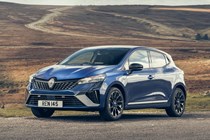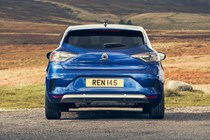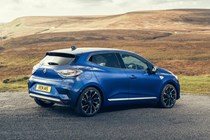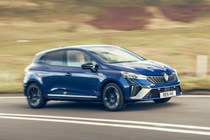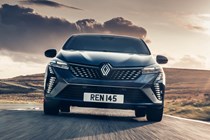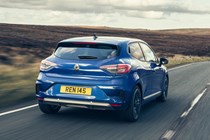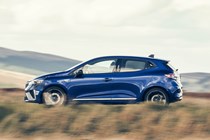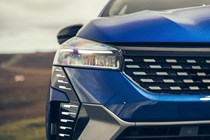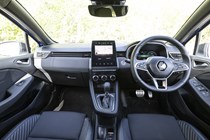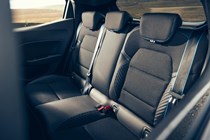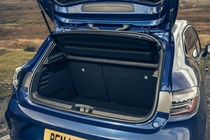
Renault Clio engines, drive and performance
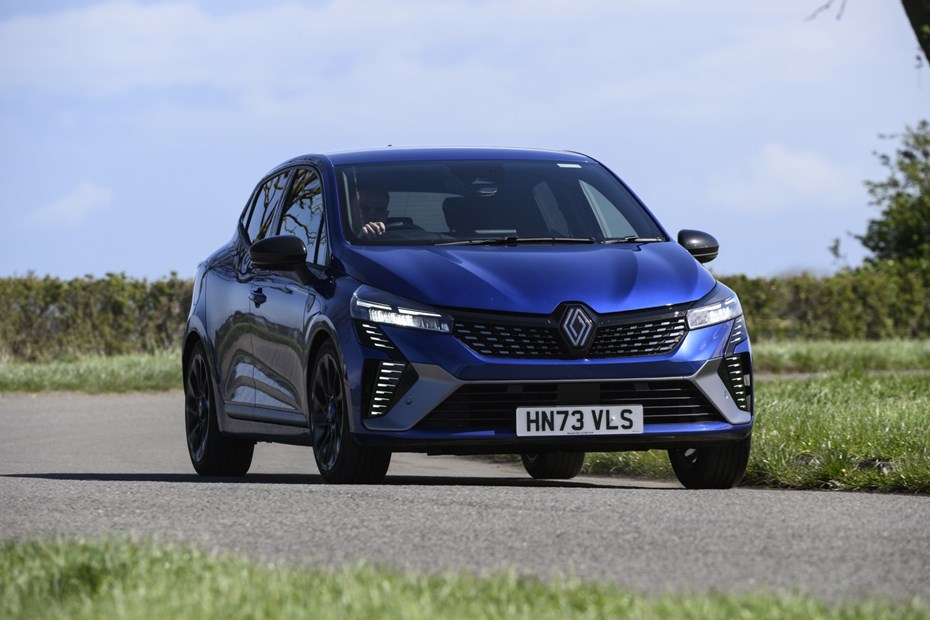
- Two engines to choose from
- Manual and automatic transmissions
- 90hp petrol our pick of the range
Petrol engine
The cheapest engine in the Renault Clio’s range is a 90hp 1.0-litre three-cylinder petrol unit. It’s badged TCe 90 and it replaces the old car’s SCe 75 and TCe 100 engines. Renault says the engine can drag the Clio from 0–62mph in 12.2 seconds before hitting a top speed of 112mph, which should be more than enough for most buyers. More importantly, it promises to return up to 54.3mpg.
The engine is paired with a six-speed manual gearbox, which we think suits the Clio well. That’s because it’s a willing unit that’s happy to be pushed to upper echelons of its rev-range – and it’s so much more satisfying to snick through the gears yourself to get the best from the engine.
Because it’s such a small engine, there are limitations to its ability. You don’t feel them around town because First and second gear are quite short – and that mechanical advantage makes the Clio feel nippy at low speeds. But once you start pushing on in the higher gears towards the national speed limit, the engine can feel out of its depth.
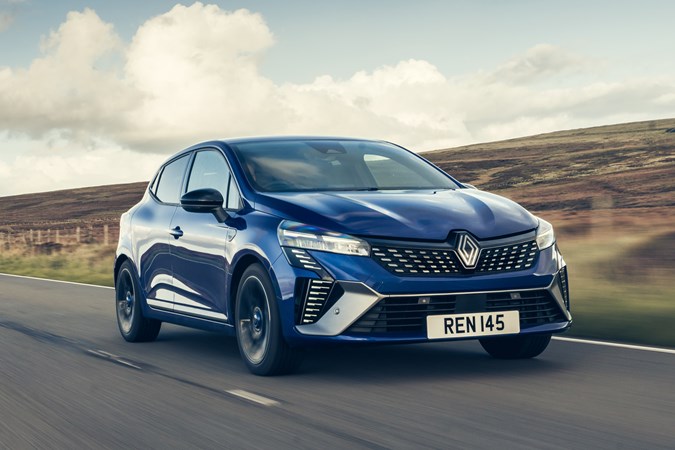
Hybrid engine
Renault also sells the Clio with a full hybrid powertrain. It comprises a 1.6-litre petrol engine, a large electric motor to power the wheels, a small electric motor to assist the engine and a 1.2kWh battery pack. The system has a combined output of 145hp – and Renault says it can operate in electric-only mode for up to 80% of the time around town.
Having spent a week with the car, we can wholeheartedly believe Renault’s efficiency claims. The Clio hybrid prioritises electric running at low speeds and the electric motor assists the engine whenever it can once you’re out of the town. By the time we handed the keys back to Renault, the trip computer showed we’d averaged more than 50mpg – and we weren’t trying to drive particularly efficiently.
The hybrid system gives the Clio a welcome turn of speed, too. The electric motor produces 205Nm of torque (pulling power) all on its own, which means you’ve got plenty of oomph under your right foot to overtake dawdling traffic on a B-road. The instant response from the electric motor also helps to slingshot you between corners when you’re pedalling the Clio hard down a winding country lane.
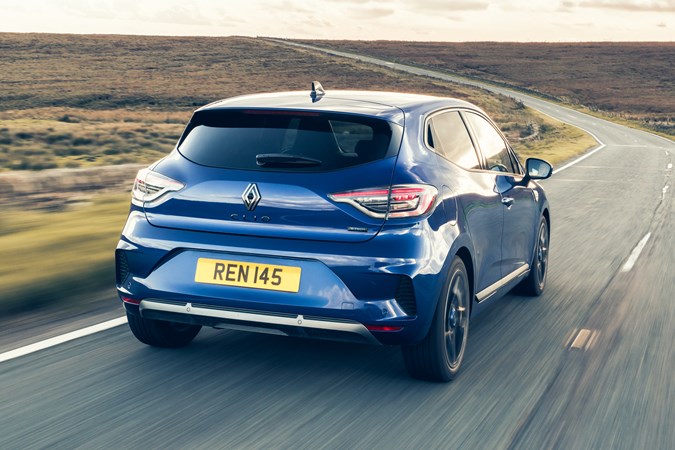
But the technology isn’t perfect. Renault chose to mate the petrol engine to a rather unconventional four-speed, clutchless automatic gearbox. These days, most automatic gearboxes have six gears at least so, to make the Clio’s transmission work with just four, Renault made the gap between each gear enormous. That means the petrol engine screams for mercy when you’re really hammering it.
You also have no manual control over the transmission which is probably just as well because the shifts are almost as long as the gearing. Because the gearbox doesn’t have a clutch or a torque converter, the powertrain’s electric motors need to match the engine speed to the car’s road speed before slotting the gear into place. It takes time for the computers to figure that out – there’s a good two-second delay between gearshifts, slowing progress when you’re accelerating hard.
What’s it like to drive?
- Light and responsive steering
- Good handling, some body roll
- Not as fun as a Fiesta – but the Fiesta’s dead
The facelifted Clio feels much the same as before. In fact, the biggest change benefitting the car is that its toughest rival has bit the dust. Now the Ford Fiesta has been axed, the Clio finds itself very close to the top of its class in the driveability stakes, sitting just behind the MINI Hatch.
It’s a very likeable little car that’s fun to drive despite its soft suspension setup. You get a noticeable amount of body roll when you’re pressing on, but the chassis manages the weight transfer expertly and serves up loads of grip. That gives you the confidence to keep pressing when similarly soft rivals, such as the Skoda Fabia, would prefer you to back off.
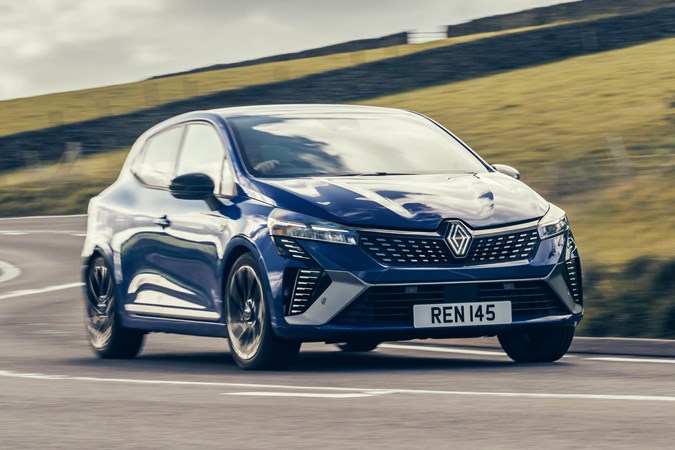
The steering is quite sharp off-centre, making the Clio feel darty and nimble. However, there’s very little resistance as you apply more lock, which means it’s harder to judge where the front wheels are pointing than it is in a MINI Hatch. Switching the car from Normal mode to Sport mode at least partially solves the problem, as it increases the weight of the steering. You also get the benefit of a slightly sharper throttle.
The manual model is the most involving Clio to drive, as you need to work the gearbox hard to keep the tiny engine on the boil. Thankfully, the gearbox is great fun to use and Renault absolutely nailed the Clio’s pedal weights. You’ll never tire of shifting between second, third and fourth on a twisty road. The hybrid is far less engaging, but it compensates with its muscular straight-line performance.



